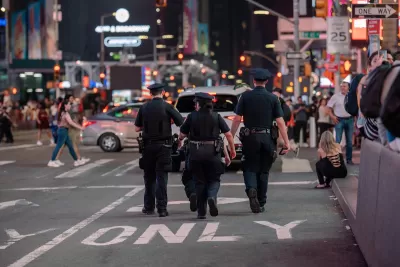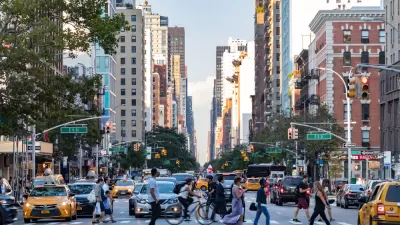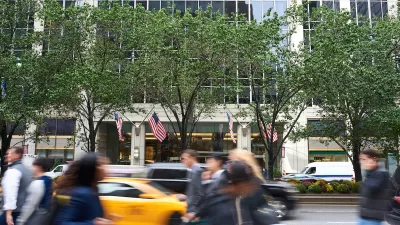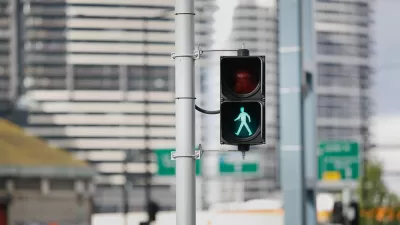The city’s police force continues its history of disproportionately citing people of color for illegal street crossings.

New York City police officers continue to issue a disproportionately large number of jaywalking tickets to people of color, reports Gersh Kuntzman in Streetsblog NYC.
“Of the 463 summonses for which race was known, 426 summonses, or 92 percent, were written to Blacks or Latinos. Only 27 tickets, or fewer than 6 percent, were issued to people identified as non-Hispanic whites.” Kuntzman notes that Black and Latino residents make up 55 percent of the city’s population, following similar findings in 2019 and 2020. “Whites received 5.9 percent of the tickets even though they are 32 percent of the population.”
Jaywalking isn’t enforced equally across the city, either. “According to the city's database of summonses, only 47 of the city's 77 precincts registered an illegal crossing ticket at all in 2023.”
A proposed bill that would have legalized crossing outside of crosswalks gained little support in the city council. Across the country, California decriminalized jaywalking in 2022, barring police from issuing citations when a crossing wasn’t ‘truly dangerous.’
FULL STORY: ON THE BIAS: NYPD’s ‘Walking While Black’ Ticketing Continues

Maui's Vacation Rental Debate Turns Ugly
Verbal attacks, misinformation campaigns and fistfights plague a high-stakes debate to convert thousands of vacation rentals into long-term housing.

Planetizen Federal Action Tracker
A weekly monitor of how Trump’s orders and actions are impacting planners and planning in America.

Chicago’s Ghost Rails
Just beneath the surface of the modern city lie the remnants of its expansive early 20th-century streetcar system.

Bend, Oregon Zoning Reforms Prioritize Small-Scale Housing
The city altered its zoning code to allow multi-family housing and eliminated parking mandates citywide.

Amtrak Cutting Jobs, Funding to High-Speed Rail
The agency plans to cut 10 percent of its workforce and has confirmed it will not fund new high-speed rail projects.

LA Denies Basic Services to Unhoused Residents
The city has repeatedly failed to respond to requests for trash pickup at encampment sites, and eliminated a program that provided mobile showers and toilets.
Urban Design for Planners 1: Software Tools
This six-course series explores essential urban design concepts using open source software and equips planners with the tools they need to participate fully in the urban design process.
Planning for Universal Design
Learn the tools for implementing Universal Design in planning regulations.
planning NEXT
Appalachian Highlands Housing Partners
Mpact (founded as Rail~Volution)
City of Camden Redevelopment Agency
City of Astoria
City of Portland
City of Laramie





























